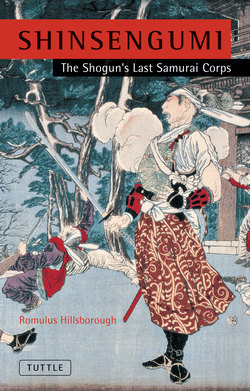Читать книгу Shinsengumi - Romulus Hillsborough - Страница 13
На сайте Литреса книга снята с продажи.
ОглавлениеAuthor’s Note
For the sake of authenticity I have placed Japanese family names before given names (except for the names of twentieth-century writers quoted in the text) and have used the Chinese calendar rather than the Gregorian one to preserve the actual feeling of mid-nineteenth-century Japan. For clarity’s sake, Japanese dates and era names are generally accompanied by the corresponding years in the Western calendar. For easy reference, I have included a short Table of Era Names and Their Corresponding Years in Western Chronology after the appendixes. I have romanized Japanese terms when I felt that translation would be syntactically awkward or semantically inaccurate. These romanized terms, other than names, are italicized the first time they appear, except for words such as samurai and geisha, which are included in the lexicon of modern American English. I have translated terms, including proper nouns, that I thought would lend themselves favorably to English. I have not necessarily adhered to translations of terms that have been used by other writers. I have not pluralized Japanese terms, but a plural or singular meaning should be clear from the context in which a term is used. For example, a samurai is singular, whereas many samurai is plural.
I have written a brief Historical Background, preceding the first chapter (“Loyal and Patriotic Corps”), to give readers a basic foundation by which to better comprehend this intricate history. Unlike in my previous books, I have included a bibliography and source notes, although most of my sources are in the Japanese language. All English renderings of historical Japanese documents— including poems, letters, diaries, memoirs, and recollections—are my own translations. For the benefit of readers who have trouble keeping track of Japanese names and terminology, I have included a Glossary of Japanese Terms after the Table of Era Names.
I express my sincerest appreciation to Mr. George L. Cohen for his invaluable and painstaking work in editing the original manuscript; to Mr. Masataka Kojima, direct descendant of Kojima Shikanosuké and curator of the Kojima Museum, for his kind permission to use the photograph of Kondō Isami’s training robe and for providing me with an insight into this history that cannot be had from written materials alone; to Ms. Chié Kimura, direct descendant of Hijikata Toshizō’s elder brother, for her permission to use the photo of the original miniature Shinsengumi banner and for her special effort in photographing a replica of the Shinsengumi banner for use herein; to Ms. Fukuko Satō, direct descendant of Satō Hikogorō, for sharing with me an anecdote of Hijikata Toshizō’s last days and for her kind permission to use the photos of Kondō Isami and Hijikata Toshizō; to Ms. Mariko Nozaki for her assistance in the translation of archaic Japanese. Finally, I would like to extend special thanks to Mrs. Tae Moriyama, my Japanese teacher, without whose dedicated instruction nearly a quarter century past I might never have gained sufficient knowledge of the Japanese language to comprehend this complicated history; and to Mr. Tsutomu Ohshima, chief instructor of Shotokan Karate of America, whose invaluable teachings over these past three decades have provided me with an occasional and sudden bright flash of insight into the hearts and minds of the samurai depicted herein.
